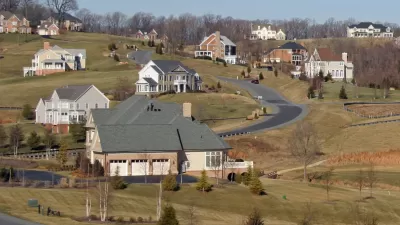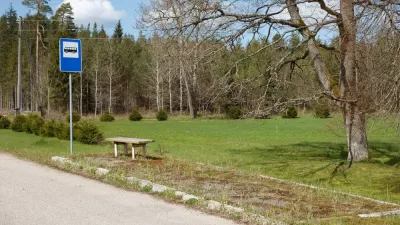While migration bolsters the populations of outer suburbs in the West and the South, their counterparts in the East and the Midwest show signs of decline. That includes well-off areas.

Since the Great Recession, Robert Gebeloff writes, previously-booming outer suburbs in places like Hunterdon County, New Jersey show signs of looming population decline. "Some American communities that until recently were considered demographic boom towns are now caught up in a downward demographic mix: young people having fewer children, the boomer generation getting older. And migration patterns, stalled by the recession, are resuming, but only in certain parts of the country."
The issue can be traced to falling birthrates and, often, more deaths. "Through 2016, about one in four outer-ring suburbs were experiencing more deaths than births, including 18 of 30 such counties in New York, New Jersey and Pennsylvania [...]" Gebeloff notes that although that pattern is often associated with impoverished counties, the trend extends to well-off suburbs as well.
Outer suburbia may be a much-maligned form of urban development. But decline anywhere poses its challenges. "The nation's sprawling growth pattern has taken its share of criticism; it's associated with long-distance commuting, environmental degradation and urban decay. But population stagnation in places that had been growing will most likely bring its own sets of problems, including pressures on real estate values and eventual shrinking of political representation."
FULL STORY: Why Outer Suburbs in the East and Midwest Have Stopped Booming

Planetizen Federal Action Tracker
A weekly monitor of how Trump’s orders and actions are impacting planners and planning in America.

Restaurant Patios Were a Pandemic Win — Why Were They so Hard to Keep?
Social distancing requirements and changes in travel patterns prompted cities to pilot new uses for street and sidewalk space. Then it got complicated.

Map: Where Senate Republicans Want to Sell Your Public Lands
For public land advocates, the Senate Republicans’ proposal to sell millions of acres of public land in the West is “the biggest fight of their careers.”

Maui's Vacation Rental Debate Turns Ugly
Verbal attacks, misinformation campaigns and fistfights plague a high-stakes debate to convert thousands of vacation rentals into long-term housing.

San Francisco Suspends Traffic Calming Amidst Record Deaths
Citing “a challenging fiscal landscape,” the city will cease the program on the heels of 42 traffic deaths, including 24 pedestrians.

California Homeless Arrests, Citations Spike After Ruling
An investigation reveals that anti-homeless actions increased up to 500% after Grants Pass v. Johnson — even in cities claiming no policy change.
Urban Design for Planners 1: Software Tools
This six-course series explores essential urban design concepts using open source software and equips planners with the tools they need to participate fully in the urban design process.
Planning for Universal Design
Learn the tools for implementing Universal Design in planning regulations.
Heyer Gruel & Associates PA
JM Goldson LLC
Custer County Colorado
City of Camden Redevelopment Agency
City of Astoria
Transportation Research & Education Center (TREC) at Portland State University
Camden Redevelopment Agency
City of Claremont
Municipality of Princeton (NJ)




























